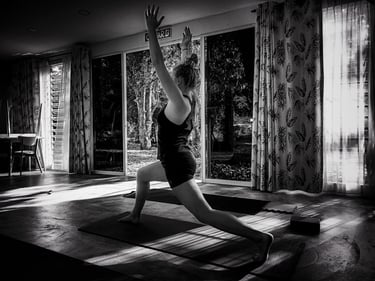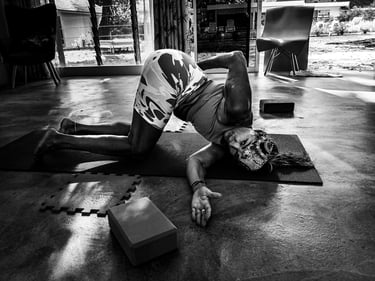Guarding Reflex: More Resistance
Types of Guarding
Muscular Guarding: The most common form, where muscles involuntarily tighten around an injured or previously injured area. A runner who once strained their hamstring may unconsciously keep it slightly tense, limiting their stride length even after healing.
Neurological Guarding: When the nervous system perceives a movement as dangerous, even if the injury has healed, leading to persistent stiffness or hesitation. Someone recovering from a lower back injury may feel discomfort when bending forward, not due to active pain but because their nervous system still perceives the motion as risky.
Psychological Guarding: A learned response where fear or past trauma influences movement patterns, even in the absence of physical damage. A person who slipped on ice may hesitate to walk confidently on similar surfaces, even if they are physically capable, because their brain associates it with a past fall.
Visceral Guarding: When internal organ discomfort or dysfunction leads to involuntary muscular tension in surrounding areas. Those with chronic digestive issues might notice abdominal tightness, as their body instinctively tenses to protect internal discomfort.
Why Your Body Resists
The guarding reflex is the body's automatic response to perceived threat or past trauma, creating muscle tension and restricting movement to prevent further injury. While this reaction is protective, it can persist long after the injury has healed, leading to stiffness and reduced flexibility.
When the nervous system registers a movement as risky—whether due to a past fall, strain, or discomfort—it signals the muscles to tighten as a defense mechanism. This response is common in those recovering from injuries, as the body subconsciously avoids motions associated with pain.
How to Work With the Guarding Reflex
Ease into movements gradually.
Gentle repetitions help rewire the nervous system by showing the movement is safe.
Slow, deep breaths signal the body to relax.
Repetition builds trust between the nervous system and movement.




The Mind-Body Connection
Healing is as much about mindset as it is about movement. By practicing patience and awareness, you help your body shift from a state of guarding to one of confidence and fluidity. Trusting your body's ability to adapt is key to overcoming the guarding reflex and restoring natural movement. The goal isn’t to “force” movement but to rewrite the memory through repetitive, safe experiences..
More Insights
